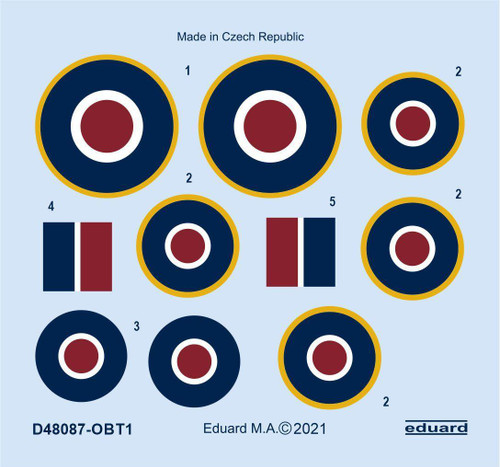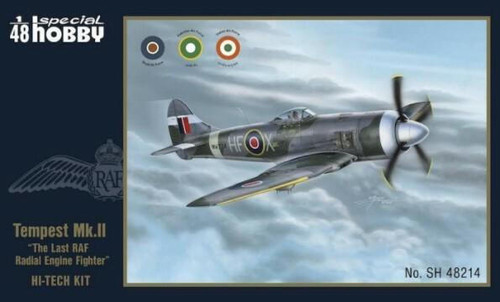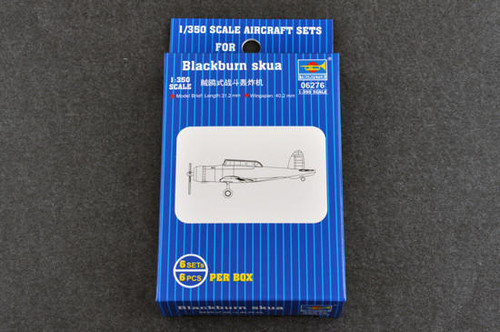Description
In 1934, the Air Ministry issued Specification O.27/34 calling for a carrier borne multi-purpose aircraft which should be capable of operating in both fighter and dive bomber roles. In those days, the concept of a carrier fighter aircraft as seen by the British military had to have a crew of two facilitating long flights over the sea and suited to fighting enemy’s patrol planes. In no way, any kind of fighting against opposing bomber planes or even fighters had ever been considered. As the best of all proposed projects was chosen the B.24 designed by Blackburn’s chief designer G.E.Petty. The aircraft was a low-wing type with folding wings and retractable undercarriage. Under the fuselage, it also had an arrestor hook and a recess for one bomb of weight up to 226kg. The first prototype aircraft, later to be named the Skua Mk.I, was taken aloft for the first time on 9 February 1937. Following a successful set of test flights, the mass production was launched instantly. The production machines were powered by a Bristol Perseus XII and were known as the Skua Mk.II. They saw service with front line squadrons no. 800, 801, 803 and 806 and were also issued to training units or to target tow units. Despite all the rush while being put to production, the machines really lacked abilities to serve as figher planes and were deemed to be quite obsolete. But when the war broke out, the Skua found wery quickly its way to operations both over the land and from the carriers. During their first ever bombing raid against a German sub, which occured on 14 September, two of the flight of three were lost to their own poor-quality bombs. On 26 September, two machines of No 803 Sqn managed to shot down a German Dornier Do 18 flying boat, achieving the very first confirmed victory of a British aircrew in the war. The Skua, however, had several more primacies under its belt. On 10 April 1940, during the Norwegian campaign, a group of 16 Skuas sank German cruiser Königsberg. Aircraft of No 800 Sqn led by Capt. R.T.Partridge and of No 803 Sqn under the command of Lt.W.P.Lucy took off from their base at Hatson on the Orkneys and performed what was the first successful aerial attack against a war ship of the Second World War. Skuas also took part in fightings over Dunkirk and machines from HMS Royal Ark fought in the Med, where, on 3 July 1940, they got famous for being the first British warplanes involved in actions against the former British ally, the French. It also has to be mentioned that these Skuas were the first ones to be lost in that undeclared war. The last Skuas were withdrawn from Ark Royal in April 1941 and since then went on serving with non-combat units only. Their war career was rather short, and despite their low performance in the fighter role, several pilots managed to achieve their acedom (ie gaining more than five confirmed victories) flying these aircraft. The Skua could have been far more successful, mainly in the bomber role just if it had been used in a proper way by Admiralty, obviously to the detriment of the Royal Navy.
The model is back in production after a couple of years. It comes via four grey styrene runners and a clear one which are accompanied by a PE fret and detail resin parts. The decal sheet brings markings for three FAA airframes.


















